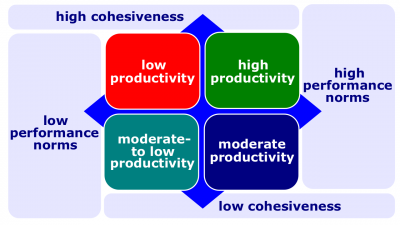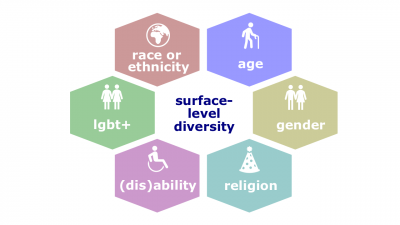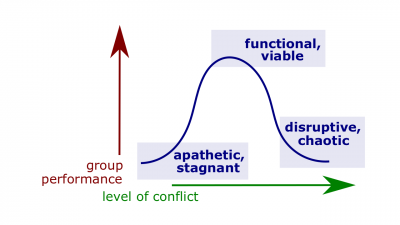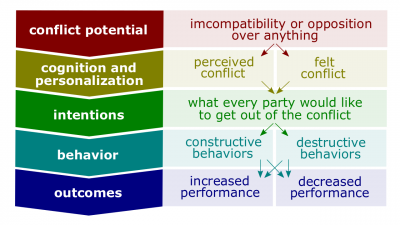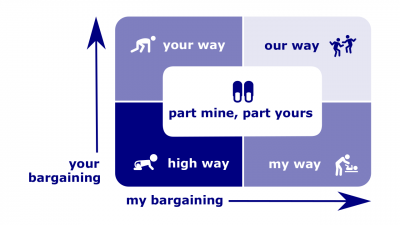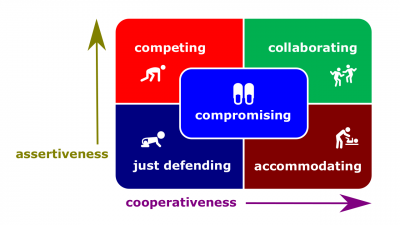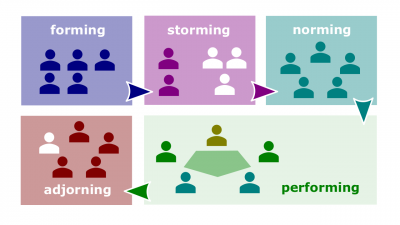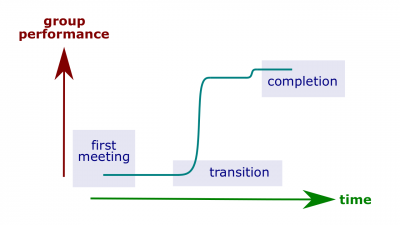Difference between revisions of "Social Rationale Quarter"
(→Outline) |
(→Practices) |
||
| (276 intermediate revisions by 2 users not shown) | |||
| Line 1: | Line 1: | ||
| − | [[Social Rationale Quarter]] (hereinafter, the ''Quarter'') is the | + | [[Social Rationale Quarter]] (hereinafter, the ''Quarter'') is a lecture introducing the learners to [[social research]] primarily through key topics related to [[social rationale]]. The ''Quarter'' is the second of four lectures of [[Social Quadrivium]], which is the fifth of seven modules of '''[[Septem Artes Administrativi]]''' (hereinafter, the ''Course''). The ''Course'' is designed to introduce the learners to general concepts in [[business administration]], [[management]], and [[organizational behavior]]. |
| − | |||
| − | |||
| − | |||
| − | |||
==Outline== | ==Outline== | ||
| − | '' | + | ''[[Communication Quarter]] is the predecessor lecture. In the [[enterprise research]] series, the previous lecture is [[Human Perceptions Quarter]].'' |
===Concepts=== | ===Concepts=== | ||
| − | + | #'''[[Social rationale]]'''. A set of reasons or a logical basis for a course of action or a particular belief of a [[group]] of people. | |
| − | + | #*[[Social psychology]]. An area of [[psychology]] that blends concepts from [[psychology]] and [[sociology]] to focus on the influence of people on one other. | |
| − | *[[ | + | #*[[Sociology]]. The study of people in relation to their social environment and culture. |
| − | + | #*[[Anthropology]]. The study of societies to learn about human beings and their activities. | |
| − | + | #'''[[Group]]'''. Two or more interacting and interdependent individuals who come together to achieve particular goals. | |
| − | *[[ | + | #*[[Informal group]]. A group that is neither formally structured nor organizationally determined; such a group appears in response to the need for social contact. |
| − | *[[ | + | #*[[Formal group]]. A designated workgroup defined by an organization's structure. |
| − | *[[ | + | #*[[Interacting group]]. A typical group in which members interact with each other face to face. |
| − | *[[ | + | #*[[Reference group]]. An important group to which individuals belong or hope to belong and with whose [[group culture|culture]] individuals are likely to conform. |
| − | *[[ | + | #'''[[Social identity theory]]'''. Perspective that considers when and why individuals consider themselves members of groups. |
| − | + | #*[[Outgroup]] ([[out-group]]). (1) Those people who do not belong to a specific [[ingroup]]; the inverse of an [[ingroup]], which can mean everyone outside one's group; (2) An identified other group. | |
| − | *[[ | + | #*[[Ingroup]] ([[in-group]]). An exclusive, typically small, group of people with a shared interest or identity. |
| − | + | #*[[Faultiness]]. The perceived divisions that split groups into two or more subgroups based on individual differences such as sex, race, age, work experience, and education. | |
| − | + | #*[[Boundary spanning]]. When individuals form relationships outside their formally assigned groups. | |
| − | *[[ | + | #'''[[Group trait]]'''. An enduring characteristic that describes a group's behavior. The major trait is members of the group themselves, as well as their number, their combination of [[personality|personaliti]]es, [[core value|values]], beliefs, and [[attitude]]s. The other traits include [[group cohesiveness]], [[diversity]], and [[group culture]]. |
| − | + | #*[[Group culture]]. The set of shared [[core value|values]], beliefs, [[attitude]]s, [[social norm]]s, and [[material symbol]]s that characterizes some particular [[group]]. The beliefs commonly include perceptions of [[role]]s and [[status]]es. | |
| − | *[[ | + | #[[File:Cohesiveness-and-norms.png|400px|thumb|right|[[Group cohesiveness|Cohesiveness]] and [[Social norm|norm]]s]]'''[[Group cohesiveness]]'''. The extend to which members of a group support and validate one another, attracted and emotionally attached to one another, share the group's goals, and motivated toward the group. |
| − | *[[ | + | #*[[Group cohesion]]. A situation when group members are emotionally attached to one another and motivated toward the group because of their attachment. |
| − | + | #'''[[Groupthink]]'''. (1) A phenomenon in which the norm for consensus overrides the realistic appraisal of alternative courses of action; (2) A situation in which a group exerts extensive pressure on an individual to align her or his opinion with others; (3) An aggregate of opinions of various group members. | |
| − | + | #*[[Conformity]]. The adjustment of one's behavior to align with the [[group culture]]. | |
| − | + | #*[[Hawthorne Studies]]. A series of studies during the 1920s and 1930s that provided new insights into individual and group behavior. | |
| − | *[[ | + | #*[[Groupshift]]. A change between a group's decision and individual decision that a member within the group would make; the shift can be toward either conservatism or greater risk but it generally is toward a more extreme version of the group's original position. |
| − | + | #'''[[Social norm]]'''. An acceptable standard or expectation within a group that is accepted and shared by a group's members. | |
| − | + | #*[[Ground rule]]. | |
| − | + | #*[[Ingroup favorism]]. Perspective in which one sees members of own [[ingroup]] as better than other people, and, often, people not in own group as all the same. | |
| − | + | #'''[[Status]]'''. A socially defined position or rank given to groups or group members by others. | |
| − | + | #*[[Status characteristics theory]]. A theory that states that differences in status characteristics create status hierarchies within groups. | |
| − | + | #'''[[Cultural attitude]]'''. An [[attitude]] that someone has toward own and other [[culture]]s. | |
| − | + | #*[[Parochialism]]. Viewing the world solely through your own perspectives, leading to an inability to recognize differences between people. | |
| − | *[[ | + | #*[[Geocentric attitude]]. A world-oriented view that focuses on using the best approaches and people from around the globe. |
| − | + | #*[[Ethnocentric attitude]]. The parochial belief that the best work approaches and practices are those of the home country. | |
| − | *[[ | + | #*[[Polycentric attitude]]. The view that the managers in the host country know the best work approaches and practices for running their businesses. |
| − | *[[ | + | #'''[[Cultural intelligence]]'''. Cultural awareness and sensitivity skills. |
| − | + | #*[[Dominant culture]]. A culture that expresses the core values that are shared by a majority of the organization's members. | |
| − | *[[ | + | #*[[National culture]]. The values and attitudes shared by individuals from a specific country that shape their behavior and beliefs about what is important. |
| − | + | #*[[Strong culture]]. A culture in which the core values are intensely held and widely shared. | |
| − | *[[ | + | #*[[Ethnicity]]. Social traits (such as [[cultural background]] or allegiance) that are shaped by a human population. |
| − | *[[ | + | #'''[[Ethnic tendency]]'''. A quality or feature regarded as a characteristic or inherent part of [[culture]]. |
| − | + | #*[[Power distance]]. A national culture attribute that describes the extent to which a society accepts that power in institutions and organizations is distributed unequally. | |
| − | + | #*[[Collectivism]]. A national culture attribute that describes a tight social framework in which people expect others in groups of which they are a part to look after them and protect them. | |
| − | *[[ | + | #*[[Individualism]]. A national culture attribute that describes the degree to which people prefer to act as individuals rather than as members of groups. |
| − | + | #*[[Long-term orientation]]. A national culture attribute that emphasizes the future, thrift, and persistence. | |
| − | *[[ | + | #*[[Short-term orientation]]. A national culture attribute that emphasizes the present and accepts change. |
| − | *[[ | + | #*[[Masculinity]]. A national culture attribute that describes the extent to which the culture favors traditional masculine work roles of achievement, power, and control. Societal values are characterized by assertiveness and materialism. |
| − | *[[ | + | #*[[Femininity]]. A national culture attribute that indicates little differentiation between male and female roles; a high rating indicates that women are treated as the equals of men in all aspects of the society. |
| − | *[[ | + | #*[[Uncertainty avoidance]]. A national culture attribute that describes the extent to which a society feels threatened by uncertain and ambiguous situations and tries to avoid them. |
| − | + | #'''[[Diversity]]'''. The extent to which members of a group are similar to, or different from, one another. | |
| − | *[[ | + | #*[[Deep-level diversity]]. Differences in values, personality, and work preferences that become more important for determining similarity as people get to know each other. |
| − | *[[ | + | #*[[Discrimination]]. Noting of a difference between things; often we refer to [[unfair discrimination]], which means making judgments about individuals based on [[stereotype]]s regarding their demographic group. [[Unfair discrimination]] occurs when someone acts out their prejudicial attitudes toward people who are the targets of their prejudice. |
| − | *[[ | + | #[[File:Diversity.png|400px|thumb|right|[[Surface-level diversity]]]]'''[[Surface-level diversity]]'''. Differences in easily perceived characteristics, such as gender, race, ethnicity, age, or disability, that do not necessarily reflect the ways people think or feel, but may activate or trigger certain [[stereotype]]s. |
| − | *[[ | + | #*[[Biographical characteristic]]. A quantifiable personal characteristic such as age, gender, income, education, socioeconomic status, family size, marital status, race, and length of tenure that are objective and easily obtained from personnel records. These characteristics are [[indicator]]s of [[surface-level diversity]]. |
| − | + | #*[[Race]]. The biological heritage (including skin color and associated traits) that people use to identify themselves. | |
| − | + | #'''[[Preconceived attitude]]'''. An [[attitude]] that someone has already had about representatives of some group without learning about their actual characteristics. | |
| − | *[[ | + | #*[[Prejudice]]. A preconceived belief, opinion, or judgment toward a person or a group of people. |
| − | *[[ | + | #*[[Stereotyping]]. Judging someone on the basis of a perception of the group to which that person belongs. |
| − | *[[ | + | #*[[Stereotype threat]]. The degree to which we internally agree with the generally negative stereotyped perceptions of our groups. |
| + | #[[File:Conflict-vs-performance.png|400px|thumb|right|[[Conflict]]]]'''[[Conflict]]'''. (1) Perceived incompatible differences that result in interference or opposition; (2) A process that begins when one party perceives that another party has negatively affected, or is about to negatively affect, something that the first party cares about. | ||
| + | #*[[Traditional view of conflict]]. The view that all conflict is bad and must be avoided. | ||
| + | #*[[Human relations view of conflict]]. The view that conflict is a natural and inevitable outcome in any group. | ||
| + | #*[[Interactionist view of conflict]]. The view that some conflict is necessary for a group to perform effectively. | ||
| + | #[[File:Conflict-process.png|400px|thumb|right|[[Conflict process]]]]'''[[Conflict process]]'''. A process that has five stages: (1) [[conflict potential]], potential opposition or incompatibility, (2) [[conflict personalization|cognition and personalization]], (3) [[conflict intention|intention]]s, (4) behavior, and (5) [[conflict outcome|outcome]]s. | ||
| + | #*[[File:Conflict-bargaining.png|400px|thumb|right|[[Conflict bargaining]]]][[Conflict bargaining]]. Trying to get something from another party in a [[conflict]]. | ||
| + | #'''[[Conflict potential]]'''. Latent qualities or abilities that may be developed and lead to a [[conflict]]. | ||
| + | #*[[Dyadic conflict]]. [[Conflict]] that occurs between two people usually on personal grounds. | ||
| + | #*[[Intergroup conflict]]. [[Conflict]] that occurs between different [[group]]s or [[team]]s. | ||
| + | #*[[Interrole conflict]]. A situation in which the expectations of an individual's different, separate groups are in opposition. | ||
| + | #*[[Intragroup conflict]]. [[Conflict]] that occurs within a [[group]] or [[team]]. | ||
| + | #*[[Process conflict]]. A [[conflict]] over how work gets done. | ||
| + | #*[[Relationship conflict]]. A [[conflict]] based on interpersonal relationships. | ||
| + | #*[[Role conflict]]. A [[conflict]] that occurs because of divergent role expectations. | ||
| + | #*[[Task conflict]]. A [[conflict]] over content and goals of the work. | ||
| + | #'''[[Conflict personalization]]'''. A situation in the [[conflict process]] in which one or more parties feel or perceive that the [[conflict]] exists. is a perception issue, second step of the Conflict Process. | ||
| + | #*[[Felt conflict]]. Emotional involvement in a conflict that creates anxiety, tenseness, frustration, or hostility. | ||
| + | #*[[Perceived conflict]]. Awareness by one or more parties of the existence of conditions that create opportunities for conflict to arise. | ||
| + | #[[File:Conflict-intentions.png|400px|thumb|right|[[Conflict intention]]s]]'''[[Conflict intention]]'''. One's aim, plan, or intention for [[conflict process]] and [[conflict outcome|its outcome]]s. | ||
| + | #*[[Collaborating intent]]. The intention of a party of a [[conflict]] to satisfy fully the concerns of all parties. | ||
| + | #*[[Competing intent]]. The intention of a party of a [[conflict]] to satisfy own interests, regardless of the impact on the other party of the conflict. | ||
| + | #*[[Compromising intent]]. The intention of a party of a [[conflict]] to give up something in order to gain something instead. | ||
| + | #*[[Accommodating intent]]. The intention of a party of a [[conflict]] to place the opponent's interests above his or her own. | ||
| + | #*[[Defending intent]]. The intention of a party of a [[conflict]] to withdraw from a [[conflict]] and [[defensive behavior|behave defensively]] without [[competing]], [[collaborating]], [[accommodating]], and/or [[compromising]]. | ||
| + | #'''[[Conflict outcome]]'''. An [[outcome]] from a [[conflict process]]. | ||
| + | #*[[Functional conflict]]. A [[conflict]] that supports the goals of the group and improves its performance. | ||
| + | #*[[Dysfunctional conflict]]. A [[conflict]] that prevents a group from achieving its goals. | ||
| + | |||
| + | ===Roles=== | ||
| + | #'''[[Social service provider]]'''. The government, private, and non-profit organization that is engaged in creating more effective organizations, building stronger communities, and promoting equality and opportunity. | ||
| + | #'''[[Group member]]'''. | ||
===Methods=== | ===Methods=== | ||
| + | #'''[[Attitude survey]]'''. A survey that elicits responses from employees through questions about how they feel about their jobs, work groups, supervisors, or the organization. | ||
| + | |||
===Instruments=== | ===Instruments=== | ||
| + | #[[File:Group-development.png|400px|thumb|right|[[Tuckman's model]] of [[group development]]]]'''[[Group development]]'''. A [[model]] that describes the [[process]] of developing a [[group]]. | ||
| + | #*[[Forming stage]]. The first stage of [[group development]] in which people join the group and then define the group's purpose, structure, and leadership. | ||
| + | #*[[Storming stage]]. The second stage of [[group development]], characterized by [[intragroup conflict]]. | ||
| + | #*[[Norming stage]]. The third stage of [[group development]], characterized by close relationships and cohesiveness. | ||
| + | #*[[Performing stage]]. The fourth stage of [[group development]] when the group is fully functional and works on group task. | ||
| + | #*[[Adjourning stage]]. The fifth stage of [[group development]] for temporary groups during which group members are concerned with wrapping up activities rather than task performance. | ||
| + | #[[File:Punctuated-equilibrium.png|400px|thumb|right|[[Punctuated-equilibrium model]]]]'''[[Punctuated-equilibrium model]]'''. A set of phases that temporary groups go through that involves transitions between inertia and activity. | ||
| + | #*[[Punctuated equilibrium]]. The hypothesis that evolutionary development is marked by isolated episodes of rapid speciation between long periods of little or no change. | ||
| + | |||
===Practices=== | ===Practices=== | ||
| + | *'''[[GLOBE program]]''' ([[Global Leadership and Organizational Behavior Effectiveness program]]) is the research project that studies cross-cultural leadership behaviors. | ||
| − | '' | + | ''[[User Experience Quarter]] is the successor lecture. In the [[enterprise research]] series, the next lecture is [[Regulatory Сompliance Quarter]].'' |
==Materials== | ==Materials== | ||
| Line 81: | Line 120: | ||
==See also== | ==See also== | ||
| + | |||
| + | [[Category:Septem Artes Administrativi]][[Category:Lecture notes]] | ||
Latest revision as of 20:51, 21 June 2020
Social Rationale Quarter (hereinafter, the Quarter) is a lecture introducing the learners to social research primarily through key topics related to social rationale. The Quarter is the second of four lectures of Social Quadrivium, which is the fifth of seven modules of Septem Artes Administrativi (hereinafter, the Course). The Course is designed to introduce the learners to general concepts in business administration, management, and organizational behavior.
Contents
Outline
Communication Quarter is the predecessor lecture. In the enterprise research series, the previous lecture is Human Perceptions Quarter.
Concepts
- Social rationale. A set of reasons or a logical basis for a course of action or a particular belief of a group of people.
- Social psychology. An area of psychology that blends concepts from psychology and sociology to focus on the influence of people on one other.
- Sociology. The study of people in relation to their social environment and culture.
- Anthropology. The study of societies to learn about human beings and their activities.
- Group. Two or more interacting and interdependent individuals who come together to achieve particular goals.
- Informal group. A group that is neither formally structured nor organizationally determined; such a group appears in response to the need for social contact.
- Formal group. A designated workgroup defined by an organization's structure.
- Interacting group. A typical group in which members interact with each other face to face.
- Reference group. An important group to which individuals belong or hope to belong and with whose culture individuals are likely to conform.
- Social identity theory. Perspective that considers when and why individuals consider themselves members of groups.
- Outgroup (out-group). (1) Those people who do not belong to a specific ingroup; the inverse of an ingroup, which can mean everyone outside one's group; (2) An identified other group.
- Ingroup (in-group). An exclusive, typically small, group of people with a shared interest or identity.
- Faultiness. The perceived divisions that split groups into two or more subgroups based on individual differences such as sex, race, age, work experience, and education.
- Boundary spanning. When individuals form relationships outside their formally assigned groups.
- Group trait. An enduring characteristic that describes a group's behavior. The major trait is members of the group themselves, as well as their number, their combination of personalities, values, beliefs, and attitudes. The other traits include group cohesiveness, diversity, and group culture.
- Group culture. The set of shared values, beliefs, attitudes, social norms, and material symbols that characterizes some particular group. The beliefs commonly include perceptions of roles and statuses.
- Group cohesiveness. The extend to which members of a group support and validate one another, attracted and emotionally attached to one another, share the group's goals, and motivated toward the group.
- Group cohesion. A situation when group members are emotionally attached to one another and motivated toward the group because of their attachment.
- Groupthink. (1) A phenomenon in which the norm for consensus overrides the realistic appraisal of alternative courses of action; (2) A situation in which a group exerts extensive pressure on an individual to align her or his opinion with others; (3) An aggregate of opinions of various group members.
- Conformity. The adjustment of one's behavior to align with the group culture.
- Hawthorne Studies. A series of studies during the 1920s and 1930s that provided new insights into individual and group behavior.
- Groupshift. A change between a group's decision and individual decision that a member within the group would make; the shift can be toward either conservatism or greater risk but it generally is toward a more extreme version of the group's original position.
- Social norm. An acceptable standard or expectation within a group that is accepted and shared by a group's members.
- Ground rule.
- Ingroup favorism. Perspective in which one sees members of own ingroup as better than other people, and, often, people not in own group as all the same.
- Status. A socially defined position or rank given to groups or group members by others.
- Status characteristics theory. A theory that states that differences in status characteristics create status hierarchies within groups.
- Cultural attitude. An attitude that someone has toward own and other cultures.
- Parochialism. Viewing the world solely through your own perspectives, leading to an inability to recognize differences between people.
- Geocentric attitude. A world-oriented view that focuses on using the best approaches and people from around the globe.
- Ethnocentric attitude. The parochial belief that the best work approaches and practices are those of the home country.
- Polycentric attitude. The view that the managers in the host country know the best work approaches and practices for running their businesses.
- Cultural intelligence. Cultural awareness and sensitivity skills.
- Dominant culture. A culture that expresses the core values that are shared by a majority of the organization's members.
- National culture. The values and attitudes shared by individuals from a specific country that shape their behavior and beliefs about what is important.
- Strong culture. A culture in which the core values are intensely held and widely shared.
- Ethnicity. Social traits (such as cultural background or allegiance) that are shaped by a human population.
- Ethnic tendency. A quality or feature regarded as a characteristic or inherent part of culture.
- Power distance. A national culture attribute that describes the extent to which a society accepts that power in institutions and organizations is distributed unequally.
- Collectivism. A national culture attribute that describes a tight social framework in which people expect others in groups of which they are a part to look after them and protect them.
- Individualism. A national culture attribute that describes the degree to which people prefer to act as individuals rather than as members of groups.
- Long-term orientation. A national culture attribute that emphasizes the future, thrift, and persistence.
- Short-term orientation. A national culture attribute that emphasizes the present and accepts change.
- Masculinity. A national culture attribute that describes the extent to which the culture favors traditional masculine work roles of achievement, power, and control. Societal values are characterized by assertiveness and materialism.
- Femininity. A national culture attribute that indicates little differentiation between male and female roles; a high rating indicates that women are treated as the equals of men in all aspects of the society.
- Uncertainty avoidance. A national culture attribute that describes the extent to which a society feels threatened by uncertain and ambiguous situations and tries to avoid them.
- Diversity. The extent to which members of a group are similar to, or different from, one another.
- Deep-level diversity. Differences in values, personality, and work preferences that become more important for determining similarity as people get to know each other.
- Discrimination. Noting of a difference between things; often we refer to unfair discrimination, which means making judgments about individuals based on stereotypes regarding their demographic group. Unfair discrimination occurs when someone acts out their prejudicial attitudes toward people who are the targets of their prejudice.
- Surface-level diversity. Differences in easily perceived characteristics, such as gender, race, ethnicity, age, or disability, that do not necessarily reflect the ways people think or feel, but may activate or trigger certain stereotypes.
- Biographical characteristic. A quantifiable personal characteristic such as age, gender, income, education, socioeconomic status, family size, marital status, race, and length of tenure that are objective and easily obtained from personnel records. These characteristics are indicators of surface-level diversity.
- Race. The biological heritage (including skin color and associated traits) that people use to identify themselves.
- Preconceived attitude. An attitude that someone has already had about representatives of some group without learning about their actual characteristics.
- Prejudice. A preconceived belief, opinion, or judgment toward a person or a group of people.
- Stereotyping. Judging someone on the basis of a perception of the group to which that person belongs.
- Stereotype threat. The degree to which we internally agree with the generally negative stereotyped perceptions of our groups.
- Conflict. (1) Perceived incompatible differences that result in interference or opposition; (2) A process that begins when one party perceives that another party has negatively affected, or is about to negatively affect, something that the first party cares about.
- Traditional view of conflict. The view that all conflict is bad and must be avoided.
- Human relations view of conflict. The view that conflict is a natural and inevitable outcome in any group.
- Interactionist view of conflict. The view that some conflict is necessary for a group to perform effectively.
- Conflict process. A process that has five stages: (1) conflict potential, potential opposition or incompatibility, (2) cognition and personalization, (3) intentions, (4) behavior, and (5) outcomes.
- Conflict bargaining. Trying to get something from another party in a conflict.
- Conflict potential. Latent qualities or abilities that may be developed and lead to a conflict.
- Dyadic conflict. Conflict that occurs between two people usually on personal grounds.
- Intergroup conflict. Conflict that occurs between different groups or teams.
- Interrole conflict. A situation in which the expectations of an individual's different, separate groups are in opposition.
- Intragroup conflict. Conflict that occurs within a group or team.
- Process conflict. A conflict over how work gets done.
- Relationship conflict. A conflict based on interpersonal relationships.
- Role conflict. A conflict that occurs because of divergent role expectations.
- Task conflict. A conflict over content and goals of the work.
- Conflict personalization. A situation in the conflict process in which one or more parties feel or perceive that the conflict exists. is a perception issue, second step of the Conflict Process.
- Felt conflict. Emotional involvement in a conflict that creates anxiety, tenseness, frustration, or hostility.
- Perceived conflict. Awareness by one or more parties of the existence of conditions that create opportunities for conflict to arise.
- Conflict intention. One's aim, plan, or intention for conflict process and its outcomes.
- Collaborating intent. The intention of a party of a conflict to satisfy fully the concerns of all parties.
- Competing intent. The intention of a party of a conflict to satisfy own interests, regardless of the impact on the other party of the conflict.
- Compromising intent. The intention of a party of a conflict to give up something in order to gain something instead.
- Accommodating intent. The intention of a party of a conflict to place the opponent's interests above his or her own.
- Defending intent. The intention of a party of a conflict to withdraw from a conflict and behave defensively without competing, collaborating, accommodating, and/or compromising.
- Conflict outcome. An outcome from a conflict process.
- Functional conflict. A conflict that supports the goals of the group and improves its performance.
- Dysfunctional conflict. A conflict that prevents a group from achieving its goals.
Roles
- Social service provider. The government, private, and non-profit organization that is engaged in creating more effective organizations, building stronger communities, and promoting equality and opportunity.
- Group member.
Methods
- Attitude survey. A survey that elicits responses from employees through questions about how they feel about their jobs, work groups, supervisors, or the organization.
Instruments
- Group development. A model that describes the process of developing a group.
- Forming stage. The first stage of group development in which people join the group and then define the group's purpose, structure, and leadership.
- Storming stage. The second stage of group development, characterized by intragroup conflict.
- Norming stage. The third stage of group development, characterized by close relationships and cohesiveness.
- Performing stage. The fourth stage of group development when the group is fully functional and works on group task.
- Adjourning stage. The fifth stage of group development for temporary groups during which group members are concerned with wrapping up activities rather than task performance.
- Punctuated-equilibrium model. A set of phases that temporary groups go through that involves transitions between inertia and activity.
- Punctuated equilibrium. The hypothesis that evolutionary development is marked by isolated episodes of rapid speciation between long periods of little or no change.
Practices
- GLOBE program (Global Leadership and Organizational Behavior Effectiveness program) is the research project that studies cross-cultural leadership behaviors.
User Experience Quarter is the successor lecture. In the enterprise research series, the next lecture is Regulatory Сompliance Quarter.
